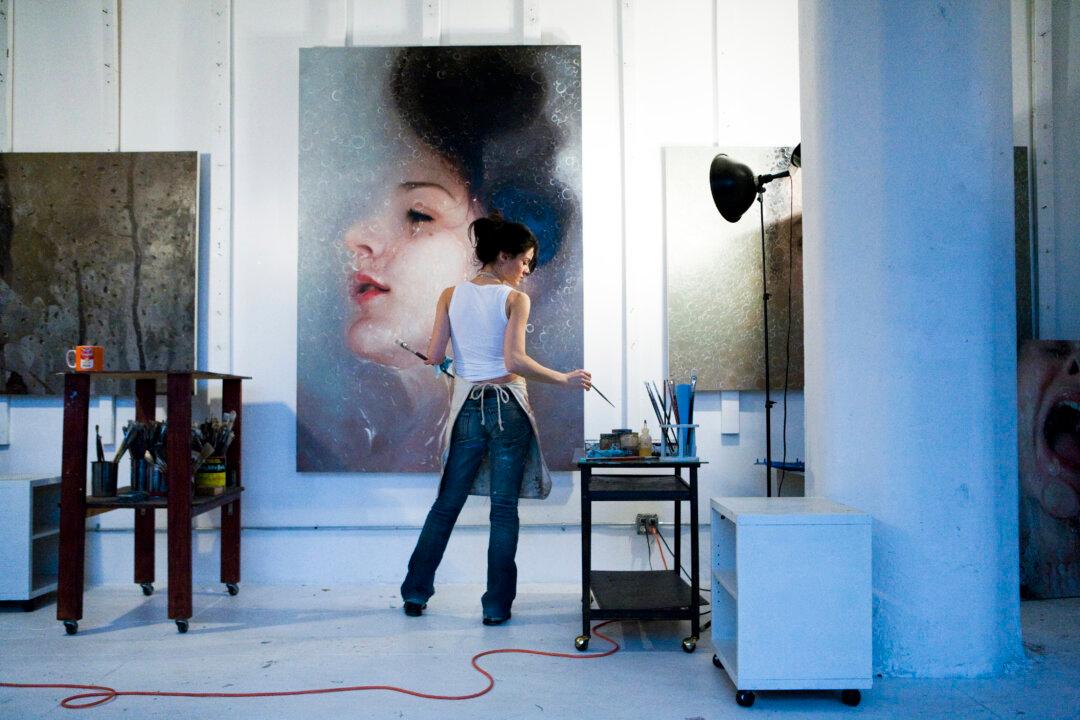This is part 4 of a 9-part series. To see the full series, see At the Confluence
The increasing prevalence of photography has fundamentally changed the way representational art is created and perceived in the modern day. At the Confluence examines how some of today’s artists have responded to the shift.
NEW YORK—Alyssa Monks’s figure paintings have a sort of gritty intimacy to them. Men and women seem to languish in the isolation of their own nakedness, their vulnerability and fragility writ large on the canvas but obscured by vapor.
Monks has long been intrigued by the visual distortions and abstractions water produces on solid forms. By placing her models in the bath, she uses water, steam, and glass to add mood and mystery to otherwise straightforward figures.
Maybe because viewers are struck by their lifelikeness, they sometimes call them photorealist paintings, a label Monks feels misses the mark. Her interest is not in painting photos, though she does use photography throughout her process.








